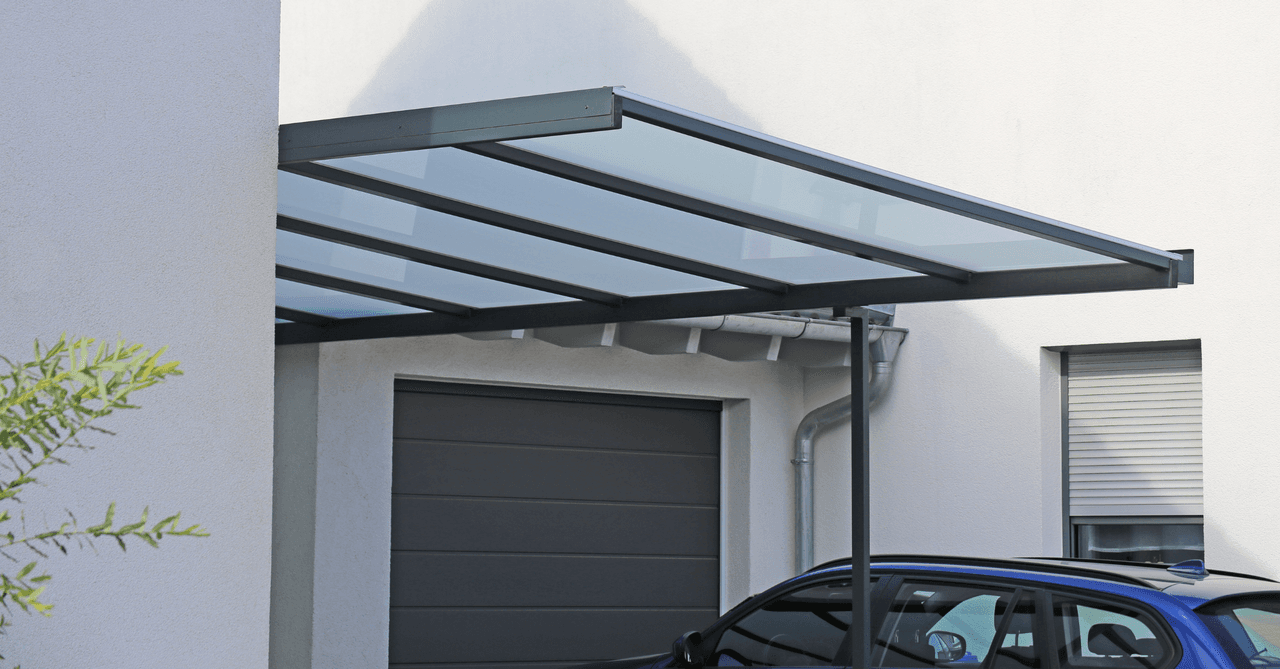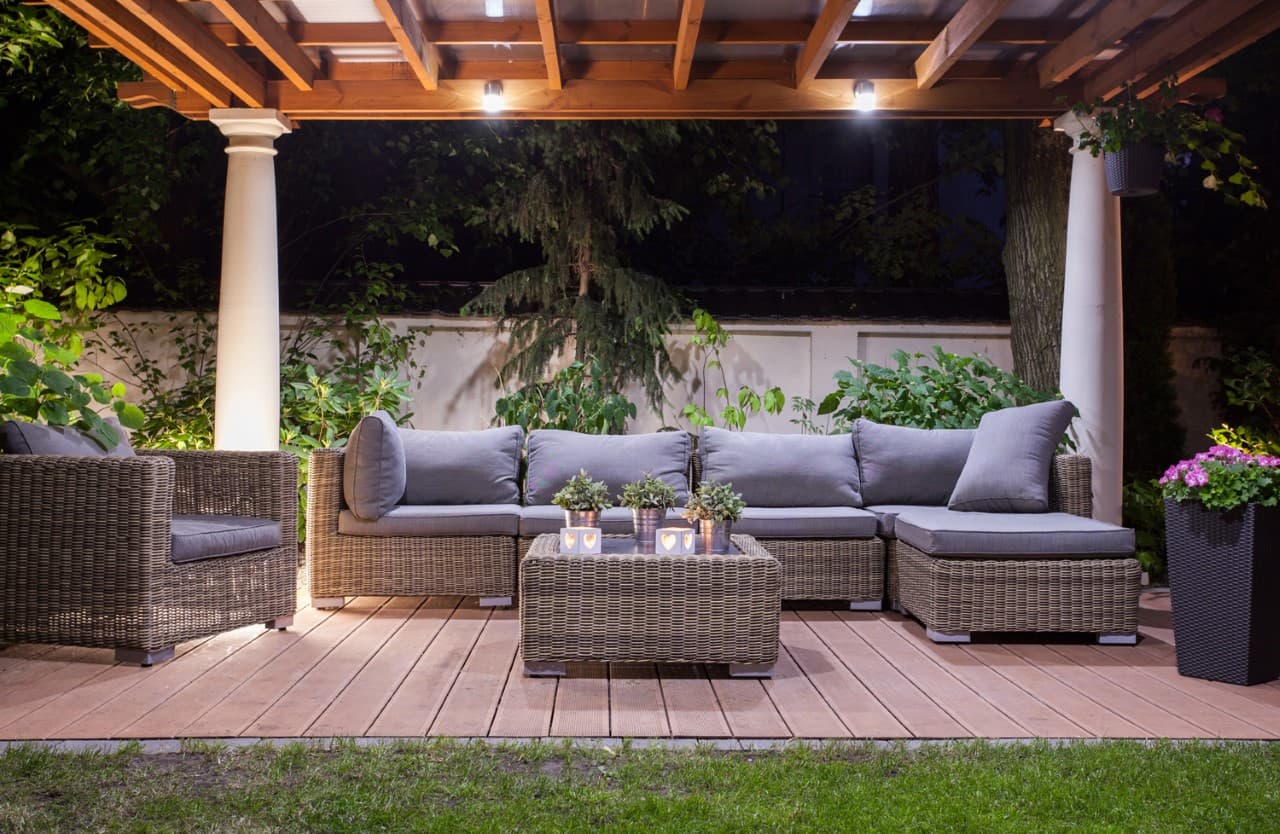Home Carport Cost Guide - How Much to Budget in 2025?
By Editorial Team
Updated on May 2, 2025

In Canada, vehicles are often exposed to bad weather, and during the winter, many turn to temporary solutions to protect their cars. However, there are more aesthetic and durable options out there, some requiring less space than a garage.
Lightweight, aesthetic, and cost-effective, carports are a great alternative to traditional garages. Whether made of steel or aluminum, this type of exterior installation is available in a slew of materials and different models.
You may be asking yourself, how much to budget to build a carport, or what factors might affect its overall cost? Are you wondering about the materials to use or if you should opt for an attached structure or a freestanding option? This article answers all these key questions and more to help you make a well-informed decision regarding your carport project.
How Much Does It Cost to Build a Carport in Canada?
Models and Materials | Cost |
Steel or vinyl flat roof and structure | $1,080–$1,800 |
Steel structure and gable roof | $1,200–$4,200 |
Aluminum structure with curved polycarbonate roof | $2,300–$9,000 |
Lean-to aluminum structure with corrugated polycarbonate roof | $3,250–$6,000 |
Two-car, aluminum wing-shaped polycarbonate carport | $7,800–$9,000 |
Vinyl or Steel Structure and Flat Roof
Prices range from $1,080 to $1,800, and this model makes for a simple and durable solution. The flat vinyl roof provides excellent weather resistance while being low maintenance, ideal for a functional and cost-effective carport.
Steel Structure and Gable Roof
Prices range from $1,200 to $4,200, depending on the size and selected finishes. This sturdy model with a steel gable roof is designed to provide optimal snow and rain protection, while also giving your property a modern look.
Aluminum Structure with a Curved Polycarbonate Roof
This type of carport, with prices ranging from $2,300 to $9,000, pairs aluminum’s lightweight factor with the resistance of polycarbonate. Its curved shape is great for managing rainwater and adds an elegant design to your backyard.
Lean-to Aluminum Structure with Corrugated Polycarbonate Roof
Prices range from $3,250 to $6,000. This model, attached to the side of your house, features both a corrugated polycarbonate roof and a resilient aluminum structure. It’s perfect for those looking for a functional carport adjacent to their home.
Modern Two-Car Aluminum Carport with Wing-Shaped Polycarbonate Roof
With prices ranging from $7,800 to $9,000, this spacious and modern carport provides dual protection. Its aluminum structure and polycarbonate roof guarantee longevity while also being big enough to shelter two vehicles.
What Factors Affect the Cost of a Carport Installation?

Source: Canva
Carport Structural Material(s)
Your carport selection will primarily hinge on its structural material(s). It’s essential to check the quality and durability of the product before purchasing. The roof must be sturdy enough to withstand winter storms.
Aluminum or galvanized steel both make for great choices: they’re lightweight, low maintenance, durable, and retailed in an array of colours fit for your home. These materials are easy to install and don’t mandate intense masonry work.
Roof Material Selection
The carport’s roof will influence rainwater drainage and the exterior look of your home. Often, you’ll have the choice between a sloped roof or a flat roof. A flat roof is curveless and, therefore has no pitch. Its overall look perfectly suits modern architecture. On the other hand, a sloped roof may be more suited to rainy regions or those exposed to snowfall. Moreover, leaves won’t stagnate on the rooftop come fall.
As for roof materials, choices aren’t lacking, that’s for sure. From steel to tiles, with asphalt shingles in between, there’s something for everyone. Another worthwhile option is installing a polycarbonate roof covering. The latter can withstand rain, snow, hail, and falling tree branches. Said material is very sturdy and guarantees durability and extreme weather resistance. Additionally, polycarbonate panels block harmful UV rays and provide sufficient shade to better protect your vehicle.
Attached Carports vs. Freestanding Car Shelters
A well-built carport will help improve the look of your house while also significantly increasing its resale value. This is all the more true when it comes to a car shelter that’s directly attached to your home. However, note that some house-adjacent shelters are more expensive than freestanding carports. There’s a simple explanation: your shelter will be considered an extension of the house, and if you’re ever tempted, easier to convert it into an enclosed garage at some point down the line.
Labour
Much like all building projects, hiring professionals will increase the overall cost. While a DIY approach isn’t far-fetched, depending on the purchased carport, it’s always highly advised to spend a little more to guarantee a job done safely and correctly the first time around.
What Are the Additional Costs?

Source: Canva
Permits
First things first, check with your municipal authorities to determine which permits are required to build or install a carport. Since every city has a specific set of regulations, it’s important to consult the concerned authorities to guide your project in the right direction. Otherwise, you risk facing hefty fines.
Once you’ve secured a permit, you can start designing your carport. Some prefab carports can easily be installed, but you can also choose to build your carport from scratch. Moreover, quite a bit of decision-making is involved in determining if the carport will be adjacent to your home or freestanding. Depending on several factors and conditions, your project's plan and building permit should cost you between $300 and $3,000.
Secure the Structure
Should the carport be exposed to various potentially damaging elements, such as strong winds, pour a concrete slab foundation or secure the structure using screw piles.
Our Tips for Making a Well-Informed Decision
In a nutshell, choosing a need-adapted carport means considering several factors, such as building materials, roof structure, location, and additional costs like permits and labour. It’s essential to properly assess all elements mentioned to guarantee a safe, durable, and aesthetically pleasing structure. Equipped with the right information, you’ll be able to make the best need-based choice while staying within budget.
FAQ
What is the difference between a carport and a garage?
The main difference between a carport and a garage is that the former is an open structure, covered by a sturdy roof or a fabric, whereas the latter is entirely enclosed with solid walls, a roof, and a door. Hence, a carport isn’t considered a garage.
Can I build a carport with wood?
Sure you can! Wood has a warm and unique quality. However, use quality wood, one that can withstand parasites and moisture to prevent the structure’s rapid deterioration.
How much does a carport slab cost?
On average, a concrete slab costs between $6 and $12 per square foot.
How much does it cost to build a 20x20 carport?
The cost of building a 20x20 carport hinges on several factors, including the cost of labour, materials, permits, and site preparation. Given that a carport of this size fits two cars, expect to spend somewhere between $4,000 and $14,000 for a safe structure under which to park your vehicles.
What are the disadvantages of a carport?
While carports can be aesthetically pleasing, DIY-optional, practical, and cost-effective, they certainly aren't as functional as an enclosed garage. Owners have noted the following drawbacks: no built-in storage capacity, limited functionality, adds minimal property value, and isn't theft-proof.
Looking for something else?
Related articles
The latest industry news, interviews, technologies, and resources.

Editorial Team
•02 May 2025
Homeownership is synonymous with home security, and this is exactly the topic we’ll broach in this article about home security systems and associated costs. Given the rise in home burglaries and the development of new technologies, such products are needed more than ever. Brands offer a broad range of alarm systems connected directly to your mobile device.

Cynthia Pigeon
•07 Nov 2023
Roofing underlayment isn’t a luxury. It’s the one element that guarantees a decent and weather-protected structural design.

Editorial Team
•07 Nov 2023
If you’re lucky enough to have a deck or an outdoor space of some kind adjacent to your home, you also know, without a doubt, that it’s a huge responsibility. While a deck is a super-valued and sought-after commodity, it can also quickly turn into a thing of pure chaos.

Editorial Team
•07 Nov 2023
We’re accustomed to seeing two classic types of wardrobes: the small cluttered closet or the huge walk-in wardrobe reserved for upscale homes. Of course, to limit yourself to these two options is to forget a multitude of closet arrangements that exist and that can be easily adapted to your needs.

Cynthia Pigeon
•07 Nov 2023
Rather elegant with its sinuous curve, the helical/spiral staircase is an urban, structural beacon in Montréal and a guaranteed head-turner.